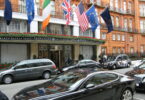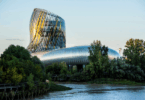Fresh fruit in June
Wine Tastings
05 July ,2025
Giles MacDonogh in London
There are many things that I miss now, one of them are the years I spent tasting wine in Austria. There were all those copious lunches with winemakers and often more copious dinners in local restaurants, so that by the time I climbed the stairs to my cot, I was well and truly stuffed.
The answer, I found, was a lovely glass of schnapps to crown the meal. That proved a wonderful digestif. Fruit Schnäpse are a feature of mostly Alemannic Central Europe: Austria, south Germany, French Alsace and Switzerland. Fresh fruits are distilled to make bone-dry spirits that confer the purest essence of the fruit to nose and palate. The Alsatians are the most famous Schnapps-makers in Britain: Kirsch, Poire and Framboise; but to my mind the best come from Austria, where a reasonably easy-to-obtain license to distil 500 litres of pure alcohol, allows many fruit farmers the chance to turn their produce into delicious schnapps.
Trying a raspberry vodka from Dutch Barn recently brought all this to mind. The Eastern European tradition is to distil alcohol from grain or potatoes and sometimes to steep fruit or flavourings in it. The result will be more sweetness and less freshness. The Dutch Barn Raspberry, for example, tastes like a raspberry cake or biscuit and is not really comparable to a zippy, clean-tasting Austrian Himbeerschnaps. I found that a pity, because I liked the well-structured vodka that I could taste behind the raspberries. The vodka had been made by distilling apples. I asked myself: could Dutch Barn not make a proper apple schnapps from some of their fruit? It would be a start?
Vinho verde (‘green wine’) is the traditional wine of the Minho region in northern Portugal. In the past it existed in white and red versions but the latter was almost entirely locally consumed. At its most basic, traditional vinho verde was a light wine served straight from the cask in local taverns. In the spring it began to ferment again and there was a little prickle. It was then that it was at its most appealing. By the summer it was often flat and dull.
Of course, there was a bottled version which was often a bit sweet because growers stopped the fermentation to maintain the prickle. The best examples of modern vinho verde are bone dry, but a bit of CO2 doesn’t go amiss there either. Vinho verde should always be light, refreshing, slightly fizzy and between 9 and 12 percent alcohol, not more. Now, climate change and other factors mean there are very good stronger whites from the Minho, but they are really not vinho verde. I suggest that they should have their own appellation as ‘Minho Branco’ and ‘Minho Tinto.’
3 Rostos’s 2024 Barrete Branco was a good, traditional vinho verde. Their 2024 Semente Orange was a natural wine, but then so was traditional vinho verde, what is different here is that this wine is 12.5 and smells of marmalade. A & D’s 2024 Casa do Arrabalde is grown at 500 metres and has impressive length. More traditional are two wines from Barcos: Las Lilas Branco (9.5 ABV) and Portugal Este Branco. Proper spritz comes from a brace of wines from Adega Guimarães, 2024 White and the excellent Praça de S Tiago. Another traditional wine was the 2024 from Adega Ponte de Lima Adamado.
Superior Minho wines often come from the Monção and Melgaço regions up near the Minho River, which forms the border with Spain. They are fermented from the same Alvarinho grapes that make Spanish Galician wines so sought after. The more ‘serious whites’ that I liked included 3 Rostos’s Nativo (largely Alvarinho), Adega Guimarãens’ Dave Arinto, the Poema Alvarinhos from Vitor Azevedo, the Alvarinhos from the Quinta de Azevedo, and several wines from the Quinta de Carapeços – chiefly the Alvarinho and Alvarinho/Trajadura blend together with a rare sweet nobly rotten wine from 2017 picked in early February.
The reds are made primarily from the Vinhão which is a dark-fleshed, ‘staining’ teinturier, producing wines with a deep morello cherry colour. The locals pour it into white ceramic cups to admire the colour. Climate change has done a lot for red vinho verde; putting lots of meat on it, so that it is now something of a neglected beauty. I really enjoyed the raspberry-scented reds from Barcos wines, the Praça de S Tiago, the Ponte de Lima and the Quinta de Carapeços.
Portugal is very much the beaten track, but there are parts of Central and Eastern Europe that are strange to me. The CEE Wine Fair was a chance to drop in on some of these, like the Çobo Winery in Albania to try E badha e Beratit, a fresh lively white made from Puls grapes and E Kuqja e Beratit made from the teinturier Vlosh and a good sparkler in Shesh I Bardhe. From Bosnia and Herzegovina I stopped at the Monastery Tvrdos where the monks make good, gutsy Vranac wines. There was more beefy Vranac from North Macedonia in the 2020 Constellation from Imako Vino.
Just after the wall fell, I visited Cotnari in Romanian Moldavia and tasted the luscious sweet Grasă wines then reserved for the party bigwigs in the Nomenklatura. I refreshed my memory with the 2010 Vinoteca with its bouquet of sealing wax and apricots. Bulgarian Melnik I know quite well, but not the Aya Estate with their Melnik and Early Melnik 55 wines. Szekszard is close to the place from whence my great-great grandfather emigrated to Vienna to make his fortune in 1872 and I like to think our family once drank Szekszard wines. The best from Eszterbauer and Szeleshát were the Bikaver red blends, the latter having perhaps the edge. From there I was off to Slovenia, one of my favourite places on earth, to try red Rebula from the Ferdinand Winery in Brda (Collio) and a fine Bordeaux blend called Brutus. Also, in Brda was Klet with excellent whites: Quercus Pinot Bianco, Pinot Grigio and Krasno Rebula Ribolla Gialla; also, a very good Pinot Blanc from Klet Krško.
The most accomplished tasting I attended in June was organised by Amelia Jukes and featured her selection of the top Chardonnay-producing estates in Australia. The estates were limited to just two bottles per vineyard, which fortunately limited the number of wines put out to taste. Chardonnay is still a very important grape in Australia along with Cabernet and Shiraz, despite the greater diversity of grape varieties used in recent decades.
So, starting in the West with Margaret River, it will surprise no one that among the best was the 2023 Cullen ‘Kevin John.’ This is the successful lighter style of Chardonnay in Australia, not many are as accomplished as this. Vasse Felix is another famous name, the 2020 was understated, their Heytesbury vineyard was better in both the 2022 and the 2019, with their wonderful pure stone-sucking fruit. Also excellent was Larry Cherubino in the same vintage (I was looking for Mozartian lyricism but I found Burgundian elegance). Cherubino also makes the wines for Robert Oatley, including ‘The Pennant’ – one of the most impressive in the tasting. Earthier and nuttier with a cool finish was the 2019 McHenry Hohnen’s Calgardup. Nuts reappeared with the Passel Estate. Moss Wood 2017 was also earthy and tarry with great length.
From the Adelaide Hills the 2019 Penfolds’ Bin A was predictably lovely. Ashton Hills seemed almost old-fashioned with its melony fruit.
On to Victoria and the Yarra, Mount Mary made excellent wines in 2017 and 2012 and then in Mornington, Port Phillip starred in both 2023 and 2018. The young wine was flinty, the older had that smell of raw parsnips you often find in good Burgundy, and great power too. Lethbridge Wines’ Allegra in Geelong was new to me. The 2016 was smoky, the 2011 beautifully balanced.
In Tasmania Dawson James was also new. The 2021 is a wine to follow. Even better was Tolpuddle’s nutty, earthy Coal River 2023. What I missed was anything to hang my hat on in the Hunter. Here the wines seemed embarrassed about being what they had been in the past, and had yet to find a formula for what they should become in the future.







